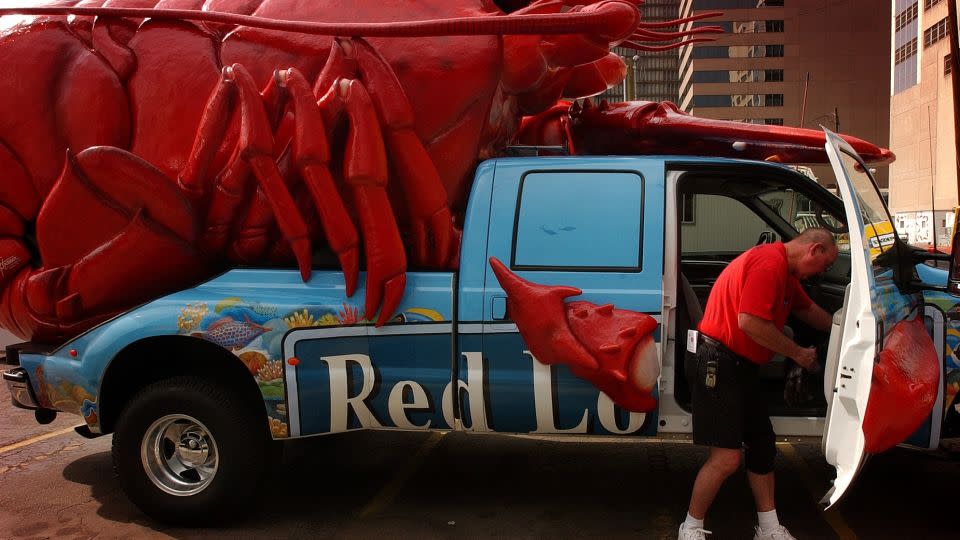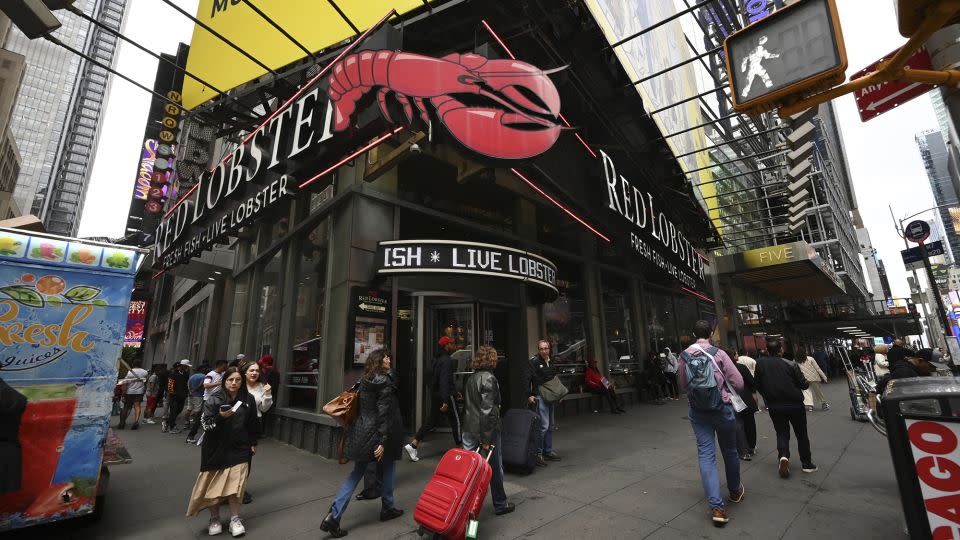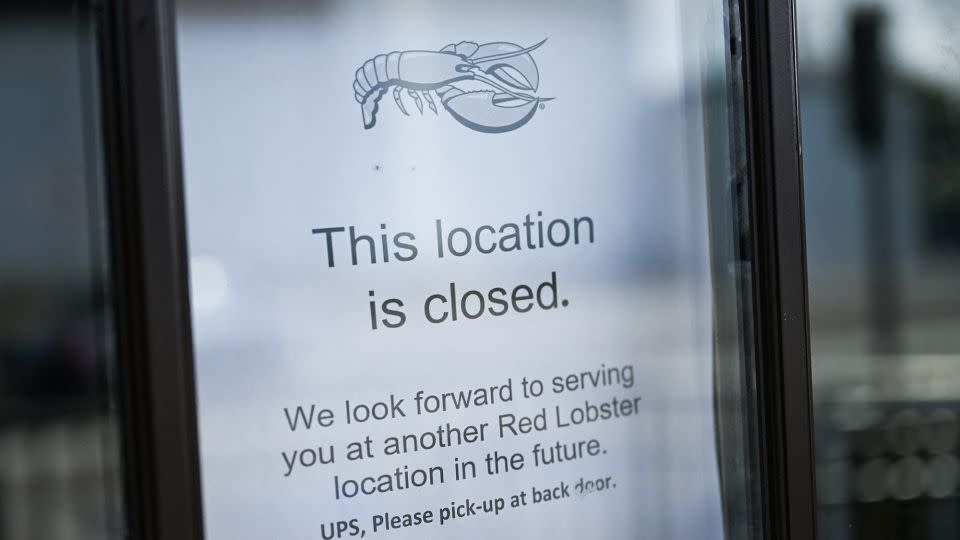How Red Lobster’s misguided endless shrimp promotion drove it into bankruptcy

Last summer, Red Lobster made $20 endless shrimp a permanent menu item.
Endless shrimp was a successful annual limited-time offer for Red Lobster for 20 years. But Red Lobster’s latest major shareholder, Thai Union, a Bangkok-based canned seafood company, saw the promotion as a way to sell off the mountains of shrimp it was catching and turned it into an everyday item. (Thai Union became Red Lobster’s largest investor in 2020.)
The change cost Red Lobster $11 million.
Red Lobster filed for bankruptcy Sunday, and the bankruptcy filing sheds new light on Thai Union’s role in the endless shrimp mishap. Red Lobster said it is investigating the circumstances of that promotion, which Red Lobster management opposed.
Under a CEO appointed at the direction of Thai Union, Red Lobster eliminated two of its breaded shrimp suppliers, leaving Thai Union with an exclusive deal to provide shrimp for the chain, the filing said.
That led to higher costs, and it did not comply with the company’s typical decision-making process for picking suppliers based on projected demand, according to the chain’s filing.

“This decision created both operational and financial issues for [Red Lobster]… saddling the company with burdensome supply obligations” to Thai Union, Red Lobster said in the filing.
Thai Union did not immediately respond to CNN’s request for comment.
Endless shrimp alone didn’t doom Red Lobster. The American poster child for seafood was dragged down by a range of factors, say former leaders at the chain and restaurant analysts — including handoffs between a mix of investors and corporate parents and Thai Union’s mismanagement.
“Certain operational decisions by former management have harmed [Red Lobster’s] financial situation in recent years,” Red Lobster said in its bankruptcy filing.
The explosive growth and popularity of fast-casual chains like Chipotle and quick-service chains like Chick-fil-A over the past two decades also squeezed Red Lobster. And years of underinvestment in Red Lobster’s marketing, food quality, service and restaurant upgrades hurt the chain’s ability to add Millennials to its core Baby Boomer customer base.
“Red Lobster was the foundation of casual dining. They had a position of power and prominence and revolutionized how American consumers eat seafood,” said Alex Susskind, a professor of food and beverage management at Cornell University, in a previous interview with CNN.
But the company didn’t build on that foundation, Susskind said. “Red Lobster had incredible popularity among Baby Boomers. They didn’t bring in a newer generation.”
Owned by General Mills
When the first Red Lobster opened in 1968 in Lakeland, Florida, an hour south of Orlando, casual dining was in its infancy.
The brand was started by southern restaurateurs Bill Darden and Charley Woodsby. Darden owned several Howard Johnson’s restaurants, one of the first casual dining concepts.
“Our motto was informal and family prices,” Woodsby later said. They saw an opportunity to bring seafood to landlocked people at more affordable prices than fine-dining restaurants.
“In most of middle America, you couldn’t get decent seafood. Red Lobster brought it to the masses,” said Jonathan Maze, the editor in chief at Restaurant Business Magazine, a trade publication. “Red Lobster was part of this casual dining revolution.”
Just two years into Darden and Woodsby’s venture, General Mills acquired the brand. General Mills owned brands like Wheaties, Cheerios and Betty Crocker, and the company wanted to enter the restaurant industry with Red Lobster’s five no-frills restaurants.
By the early 1970s, with General Mills’ advertising muscle behind it, Red Lobster opened restaurants across the South.

Red Lobster rose quickly and was the first casual dining chain to advertise on network television, according to a Harvard Business School study. Red Lobster also developed the first national seafood distribution system in the 1970s.
“Many diners preferred their seafood fried in those days, and Red Lobster’s hush puppies could be considered an early ‘signature item,’” Joe Lee, the first general manager at Red Lobster and later its president, said in a journal article. “Families were welcomed with high chairs and a 59-cent child’s plate.”
By 1978, Red Lobster had 236 restaurants and $291 million in sales. It had 372 restaurants and $834 million in sales in 1985.
In 1995, General Mills spun off its restaurant division into a new company, Darden Restaurants, named for Red Lobster founder Bill Darden. The company initially included the legacy Red Lobster chain and Olive Garden, an upstart chain General Mills had started in 1982.
Red Lobster stalls
But Red Lobster fell behind its sister brand Olive Garden under Darden.
By 2008, Olive Garden’s sales had eclipsed Red Lobster’s. Darden also acquired fast-growing chains such as Longhorn Steakhouse, Capital Grille and Yard House.
“Darden stopped investing in Red Lobster. Things slowly deteriorated,” Les Foreman, a director of operations and divisional vice president at Red Lobster from 2002 to 2022, told CNN. Red Lobster’s sales began declining and Darden prioritized investments in its other brands.

Darden soon faced pressure from activist investors pushing the company to split in two.
Darden responded to activist pressure by announcing plans in 2013 to sell Red Lobster, separating the chain from the rest of its business.
The following year, Darden sold Red Lobster to Golden Gate Capital, a private equity firm, for $2.1 billion. To help fund the deal, Red Lobster spun off its real estate assets in a transaction known as a sale leaseback agreement. Red Lobster had long owned its own real estate but would now be paying rent to lease its restaurants.
Sale leasebacks are very common in the restaurant industry, but the arrangement wound up hurting Red Lobster because it became stuck with leases it no longer could afford to pay.
“That produced cost pressures on Red Lobster that they’ve never had before,” said analyst John Gordon. “It became a problem.”
At the same time, fast-casual and quick-service restaurants grew with lower prices, thousands of new drive-thru locations and online delivery. These chains pressured the casual dining sector.
Casual dining has slipped from 36% of total restaurant industry sales in 2013 to 31% in 2023, according to Technomic, a restaurant research firm.
‘Cutting costs everywhere’
Red Lobster’s controlling shareholder Thai Union also hurt the brand, say former employees and analysts.
Thai Union was a top supplier of shrimp to Red Lobster for more than 20 years. In 2016, Thai Union took a $575 million minority stake in the brand. In 2020, Thai Union deepened its financial interest in Red Lobster.

Thai Union saw an opportunity to grow its business and also become a bigger supplier to Red Lobster.
It also tested squeezing Red Lobster’s waitstaff to the breaking point to save on labor costs, switching from waiters covering three tables to 10.
Red Lobster executives began to run for the doors under Thai Union’s management, resulting in a huge amount of C-suite churn. In 2021 and 2022, Red Lobster brought on a new CEO, chief marketing officer, chief financial officer and chief information officer. All left the company within two years.
Then came the all-you-can-eat shrimp mishap last year.
“We were expecting an increase of 20% in customer traffic, but the actual number was up to 40%,” Thai Union CEO Thiraphong Chansiri said in November.
Two months later, Thai Union said it would divest from Red Lobster and take a $530 million loss on its investment. The company blamed the pandemic, as well as “sustained industry headwinds, higher interest rates and rising material and labor costs.”
“I’m going to stop eating lobster,” Chansiri said this year.
For more CNN news and newsletters create an account at CNN.com
